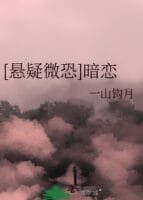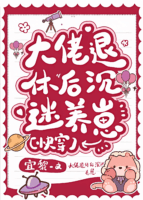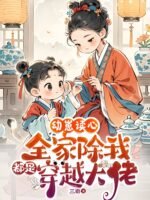I Have A Store C198
by MarineTLChapter 198: Threshing Efficiency
The teacher stood with the children by the wheat field, not in a hurry to start picking up fallen wheat stalks. Instead, she took the time to tell them stories and lessons about harvesting grain.
The adults were slowly harvesting farther away, and villagers were loading the cut wheat onto wooden carts to transport it to the threshing ground.
These carts were built from sturdy wood, with two wheels on either side, two long and straight handles, and a strong pulling rope in the center. When pulling the cart, one would stand between the handles, grasp them with both hands, place the rope over their shoulders, and lean forward with bent knees to pull. If the cart was lightly loaded, it could also be pushed backward.
Even in later generations, these carts continued to play an important role.
Before motor vehicles became common in rural areas, transportation relied entirely on them. Farmers used them to carry fertilizer to the fields, bring home wheat, corn, and cotton, and haul dirt or bricks when building houses.
“Alright, come with me to pick up wheat stalks. Stay in order and listen to instructions,” Teacher Zhou said to the students.
The teacher and students brought bamboo baskets, woven trays, and other containers.
Under the teacher’s arrangement, dozens of elementary school students lined up in a row at the edge of the wheat field, and, like soldiers searching for landmines, they advanced slowly across the field. They picked up every wheat stalk left behind after the villagers had harvested, determined not to leave even a single one behind.
During the process, some mischievous boys caught grass snakes, grasshoppers, frogs, or earthworms and deliberately threw them at the girls, making them scream and panic.
“What’s going on? No fooling around!” Teacher Xiao Lan shouted sternly.
The kids were quite afraid of the strict Teacher Xiao Lan and stopped misbehaving.
But that only lasted for a while. Soon, boys started playing again instead of focusing on the task. Some even stole stalks from the baskets of classmates who had picked up more and added them to their own.
Naturally, Teacher Xiao Lan wouldn’t let this slide. She caught one or two of them in the act and gave them a stern lesson.
Some boys, worried about being scolded for picking up too little, tried to cheat by placing weeds and twigs at the bottom of their baskets and covering them with a thin layer of wheat stalks to fool the teacher.
Did they really think those little tricks would fool her?
Of course not. They were caught red-handed shortly after.
In that sense, Zhoujiazhuang was lucky. Their village only had one production team.
In some places, kids had to take turns picking up wheat stalks for the various production teams: today for Team One, tomorrow for Team Two, and the day after for Team Three, and so on, to avoid disputes or complaints from any particular team.
While picking up wheat stalks, they noticed that some wheat grains had fallen on the ground at the edges of the fields.
The teacher, seeing this, didn’t want to waste them. She used a sieve or a fine basket to separate the grains from the dust, collecting them one by one. Truly, not a single grain was wasted—every bit was gathered for storage.
Meanwhile, Zhou Yimin was conducting a practical test of the threshing machine.
Aside from Director Ding, a few villagers, and members of the commune were also present.
The commune officials treated Zhou Yimin with notable respect.
After all, who hadn’t at least heard of the man who invented the water pump and the solar stove?
This time, upon arriving in Zhoujiazhuang, they were surprised to find that Comrade Zhou Yimin had invented yet another device—apparently a threshing machine for wheat.
Another invention closely tied to rural life and farmers.
Clearly, this comrade truly cared about the wellbeing of the agricultural population.
“Comrade, have a cigarette,” Zhou Yimin offered politely.
“Thank you, Comrade Zhou Yimin. You’re too kind.”
They wouldn’t dare underestimate Zhou Yimin. Not only was he a renowned grassroots inventor who had received national recognition, he was also an senior worker from the steel factory. Technically, there was no need for him to offer cigarettes.
Now that he took the initiative to show goodwill, of course they had to respond graciously.
Besides, the leaders from the steel factory were also present.
“Yimin, let’s get started!” Director Ding was starting to grow impatient.
He didn’t take much notice of Chen Hua from the commune, believing Zhou Yimin had no need to be overly courteous to him.
“We’re all from the steel factory. We have our own pride. Not just anyone deserves a cigarette from us.”
“Director, no rush!” Zhou Yimin turned to the villagers who were preparing for the demonstration. “Are you ready? Let’s begin.”
He wouldn’t be doing the work himself.
Although the threshing machine only required feeding the wheat stalks into the threshing chamber to separate the grain from the heads—saving all the trouble at the threshing ground—there were four or five operational roles involved. Each role required at least one or two people to function properly.
“All ready!”
The villagers on standby had already learned their tasks.
Zhou Yimin had just taught them. It wasn’t too difficult—just physical labor.
With Zhou Yimin’s signal, the villager responsible for operating the machine began cranking it. The threshing machine roared to life, and a bundle of wheat stalks was pushed into the chamber.
The stalks and grains were separated as the machine ran. Wheat grains poured out continuously, piling up in a heap.
The crowd watching was stunned.
Except for Director Ding from the steel factory—he was used to seeing big things. Still, he was impressed with the machine’s performance. This would be great news to report back to the steel plant. Another feather in their cap.
“Excellent. Absolutely excellent,” Director Ding applauded.
Seeing the factory leader clap, the others quickly followed suit.
As he watched, Director Ding asked Zhou Yimin whether the machine could be used for other crops like rice.
A true leader—he immediately thought ahead.
Zhou Yimin explained that different crops required slightly different threshers, but the basic principle remained the same. With a few modifications, the machine could definitely be used for other grains.
For example, the “rice thresher” was designed for paddy rice, while for corn, a “corn thresher” was used.
The rice thresher, commonly known as a “grain thresher,” was the most widely used machine for separating rice grains from stalks. Once the rice was harvested, this machine would be used to thresh it.
Zhou Yimin was most familiar with this type of thresher, having come from the south in his past life.
In that life, rice threshers came in two types. One was manually powered—a semi-mechanized tool. The other used mechanical power and was called a powered rice thresher.
The emergence of threshing machines significantly reduced the labor intensity of harvesting wheat and rice and greatly improved agricultural productivity.
Without threshers, wheat was still threshed in some places using a tool called a flail, repeatedly beating the grain to separate it from the husk.
Then came the process of “winnowing”—tossing the grains into the air so that the wind could blow away the lighter, unwanted husks, leaving behind the heavier grain.
It was hard, exhausting work, and incredibly time-consuming. Manually threshing 4,000 square meters of wheat would take about five full days.
Even Director Ding, as a leader, listened with full attention.
(End of Chapter)










0 Comments